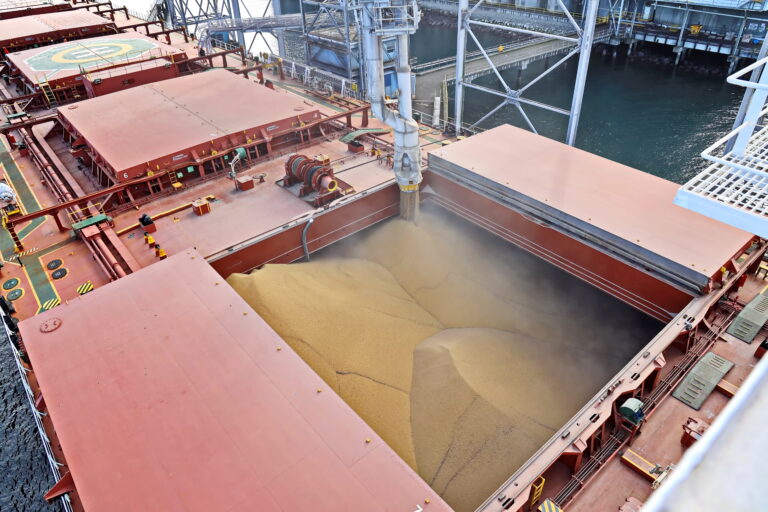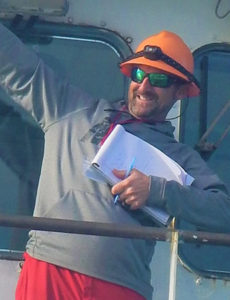- August 7, 2023
- Industry, Marine News
- Cash, Coal, and Corporations
“Wind is caused by the trees waving their branches.”
-Ogden Nash
The Nuances of Financing
While corporate lenders, shippers, and charterers are moving towards more eco-friendly operations, problems with green financing are growing. Stricter lending requirements are going into effect faster than owners can produce their long-term compliance plans. Banks do not want to end up with loans on stranded assets that can no longer earn money to pay their debt. A vessel with a low level of compliance becomes essentially unemployable.
From the owners’ perspective, producing a long-term compliance plan isn’t as easy as it may sound. The advancements toward reducing GHG to acceptable limits are numerous and cover all types of designs and outfitting for both new construction and retrofitting. Most of these advancements are still in the research and development or early on-board testing stages, so the actual future fuel savings are still unknown. Owners lack firm statistics to present to lenders.
All parties, from owners to the IMO, need to agree on the same methods of measuring fuel savings. This goes for all types of vessel designs and their cargo runs. Owners would stand to benefit by sharing their fuel saving data so that it can be assembled, organized, understood, and disseminated. Fortunately, this movement to cooperate has already started. There are groups working to make collected data valuable for everyone, be they the IMO, class societies, charterers, lenders, or even owners.
European banks, previously the backbone of ship financing, now account for less than 50% of world lending sources. Funding now comes primarily from leasing companies, public markets/investors, alternative lending, and private equity. This becomes interesting as some of these lenders employ investment strategies with only short-term interests in projects. The biggest lending growth has been in Asia and Australia.
Gathering Data
Clarksons, a well-known fount of maritime intelligence and statistics, has done a large upgrade for their individual vessel pages with a new section covering the vessels’ status in IMO compliance. Information can be found on ballast water treatment systems, if scrubbers are installed, fuel type(s), EEDI, and theoretical EEXI and CII. Some of the sections are built into the database but remain blank. As I noted above, the information and ways to gather the information are still at a formative stage.
Demand For Emission Compliant Ships
As the July 21st publication of Splash247.com said, “Already, low-performing ships are rapidly losing their social license to operate as charterers steer clear. Now, they could lose their physical right with nation-states tightening the rules.”
A new company called FUTURESHIPS has started up in Hong Kong and London to handle brokerage for vessels that are at acceptable to high levels of emissions compliance. They will be doing cargo brokerage, chartering, and S&P starting with dry bulk carriers. FUTURESHIPS hopes to be the premier one-stop destination for those who want to or need to employ IMO emission compliant ships.
Domestically, we are also seeing the demand increase for clean vessels. Some , such as California, have their own compliance requirements in place. Domestic ports and charterers are already focused on hiring low emission vessels to comply with their in-house GHG reduction requirements. There is also the thought that by chartering someone else’s clean vessels, the charterer may be able to get credits to offset the not-so-clean entities in their fleet.
Back on the River
The demand for covered hopper barges should increase as corn production ramped up over 2022 into 2023. This growth is projected to create a net increase in exports of 4.3 million metric tonnes which is based on an estimate of per acre yield with some crop condition assumptions. With the weather seen in 2022 and so far in 2023, the threat of drought or floods still exists. The USDA has already made a small reduction for projected 2023/2024 yield in anticipation of drought. Note, the export total encompasses all crops produced, not just those transported by inland river barges.

As mentioned in my last blog, coal exports for the first quarter of 2023 increased 17.2% from the 4th quarter of 2022. Both steam coal and metallurgical coal shared the rise. Over the past two years, the U.S. exported around 15% of its coal production while importing about 1%. The imported coal is usually based on it being favorably priced or of a particular type not available in the U.S. In my sailing days, we would load steel in New Orleans for Europe and in Europe load different type steel to bring back to the States.
There are 25 ports that export coal in the U.S. Only seven of these ports are geographically positioned to receive this coal via the inland river system.
The country in each region that primarily received U.S. coal exports in the first quarter of 2023 were as follows. This is based on U.S. Energy Information Administration (EIA) statistics.
REGION: COUNTRY/ AMOUNT EXPORTED
North America: Canada/ Down from 4th QTR 2022
South America: Brazil/ Up from 4th QTR 2022
Europe: Netherlands/ Down from 4th QTR 2022
Asia: India/ Up from 4th QTR 2022
Africa: Egypt/ Up from 4th QTR 2022
Governmental data reports from the energy sector showed that in the first half of 2023, the delivery of tank barges increased over that of 2022. For the first six months of 2023, there were eighteen tank barges delivered: eleven 10,000-bbl chem type barges, six 30,000-bbl barges, and one pressure barge. All the seventeen liquid barges were for clean products.
Prices on hopper and tank barges have just about plateaued. Steel prices have dropped yet the increasing costs of labor, training, and lending remain. Since prices fluctuate, DLS Marine frequently seeks out new construction costs from dry cargo and tank barge builders.
Great Lakes Dredge & Dock (GLDD)
As GLDD is a publicly traded company, their financials are published and interesting to follow. GLDD reported a loss in 2022 with much of this attributed to COVID 19 which caused the U.S. Corp of Engineers to delay publishing their bid packages. These bid requests finally started coming out in Q1 of 2023.
Most dredging work is done through bidding processes using fixed bids, similar to shipyards. This can lead to cost overruns due to weather, inflation, and labor shortages (much of GLDD’s labor is unionized). Recently, they won the bid for a substantial Corpus Christi port project, among the largest projects they have ever won. Other financial setbacks for GLDD included poor weather (project areas impacted by hurricanes), and damage to their dredge, TERRAPIN ISLAND, a 1981, 337′ trailing arm split hopper dredge which sustained a catastrophic failure to its Alco engine. The vessel was scrapped, with an asset loss of $7 MM.
For the year 2022, GLDD’s annual report attributed 53% of its income to domestic capex projects. These are new expansions mostly of port and harbor facilities. Coastal protection made necessary by hurricanes and rising water levels comprised 30% of income. Maintenance of existing waterways, ports, and harbors was 15% of income. Inland rivers and lakes projects, often working in competition with portable dredge competitors, was 2%, while the final 1% was to foreign work.
Promising news for GLDD, both capex and maintenance work are expected to grow in 2023-2024 due to the release of federal funds via the new Water Resources Development Act (WRDA). It will take time for some of these projects to get through the bidding process. Port authorities are also investing in capex work to make their docks, ports, and port access waterways accessible for larger vessels in the future. For this type of work, GLDD stated they had three competitors. They were not named in the annual report, though I believe they are likely Weeks, Manson, and Dutra. Back in 2020, 79% of GLDD’s work was on federal projects. That dropped to 78% in 2021 and 67% in 2022. The company reported that they believe things will improve by the end of 2023 and in 2024 due in large part to the WRDA.
GLDD’s fleet consists of over 100 vessels with an average age of 26 years. Their hydraulic dredges are an average of forty-four years old, while their hoppers average an age of twenty-seven. These asset ages are in line with their competitors. The larger dredges and hoppers are quite expensive to replace, so it is common for these vessels to undergo life extension work. GLDD has still built several new dredges in the past few years, as have their competitors.
GLDD is expanding into the offshore wind market as they build the first Jones Act inclined pipe vessel for subsea rock installation. This vessel is slated for a 2025 delivery at a cost of $197 MM. This vessel is used to place heavy rock around the base of wind turbine foundations to prevent bottom erosion and has already obtained a contract for the wind farm offshore of New York./

The maritime market is in a transition period. Tugs are working towards emissions compliance to meet the demands of lenders. Cargo imports and exports on the river continue to shift to meet consumer demand. Many companies, like GLDD, experienced losses in revenue but are optimistic that there’s a turnaround on the horizon
-Norman Laskay
If you’d like to keep this conversation going, please email me at nlaskay@DLSmarine.com











